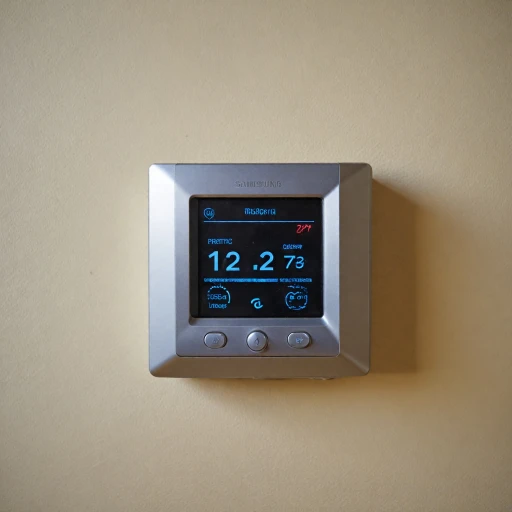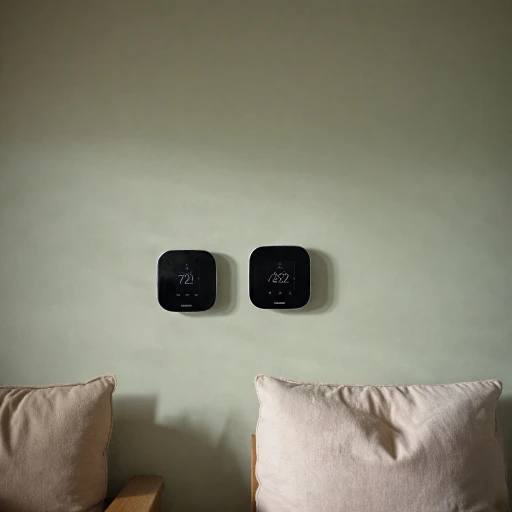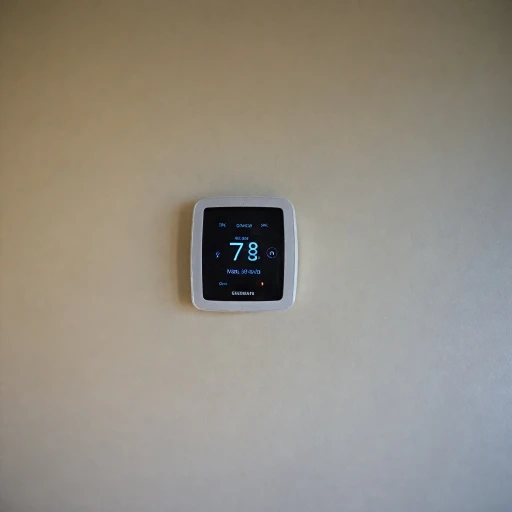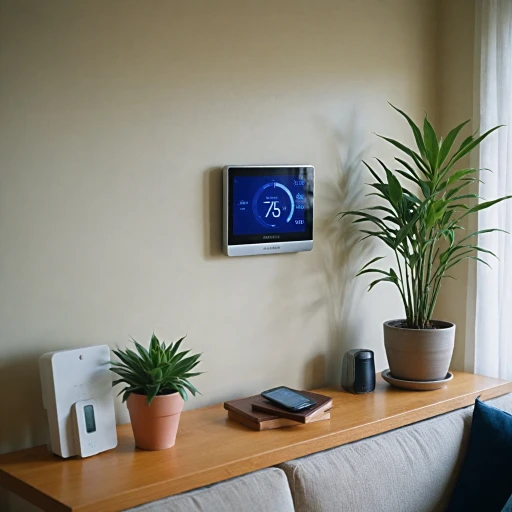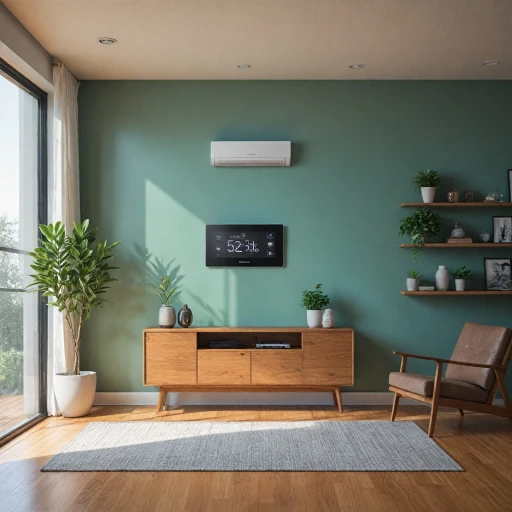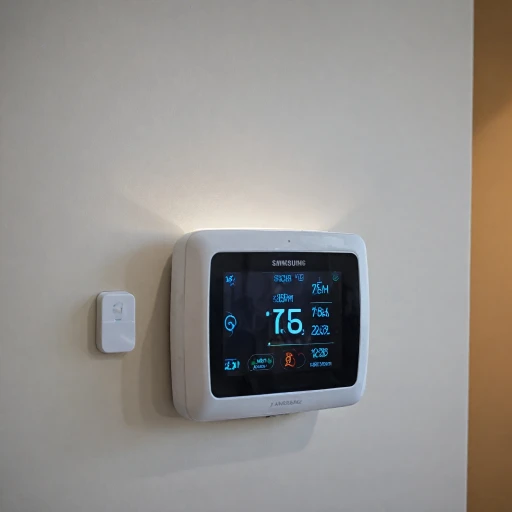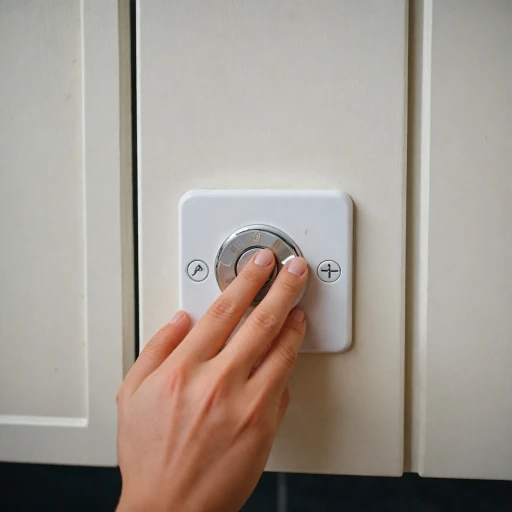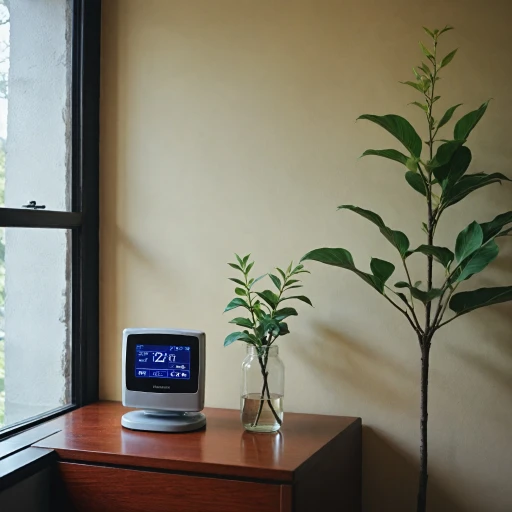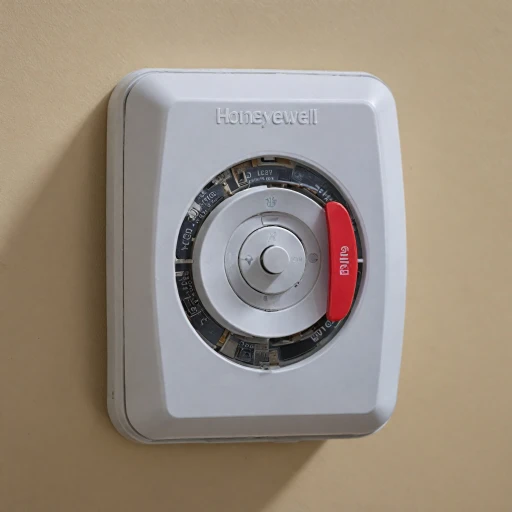
Understanding the Role of Temperature Sensors in Smart Thermostats
Grasping the Functionality of Temperature Detection Tools
When it comes to achieving the perfect balance of comfort and efficiency, the role of a temperature sensor in a smart thermostat cannot be overstated. In essence, these small but mighty devices are the unsung heroes of home climate control, facilitating intelligent and responsive temperature adjustments based on real-time data.
Temperature sensors, such as the ecobee Sensor, play a crucial function by gathering accurate readings from various sources. The data captured influences the adjustments made by the thermostat, ensuring your home's climate is tailored specifically to its immediate needs. Whether placed strategically in individual rooms or as an integral part of your ecobee thermostat setup, each sensor empowers the thermostat to adjust heating and cooling settings dynamically.
Smart thermostats leverage temperature sensors to achieve multiple benefits. From enhancing energy savings to fine-tuning comfort across different environmental zones, these sensors are a vital component. For those interested in a deeper dive into how these devices interact with the broader smart home ecosystem, it's worth exploring how temperature probes operate within these systems.
In understanding the intricacies of temperature sensors within smart thermostats, you can better appreciate the sophistication and intelligence that brands like ecobee bring with their products. These sensors, ranging from premium options to more economical models like the ecobee lite, cater to a wide array of user needs, ensuring comfort and efficiency without sacrificing quality.
How the Ecobee Temperature Sensor Works
Functionality and Interaction
The Ecobee Temperature Sensor is a key component of the Ecobee smart thermostat system, designed to optimize your home's comfort levels. At its core, this temperature sensor communicates with your Ecobee thermostat, enabling it to monitor and adjust the heating and cooling in specific rooms. This interaction allows the Ecobee thermostat to make informed decisions based on the actual conditions in different areas of your home, rather than just a single location.Precision and Flexibility
The integration of Ecobee temperature sensors means your smart thermostat can deliver more precise comfort by acquiring temperature readings from multiple points. This flexibility is particularly beneficial if you have rooms that tend to heat or cool unevenly, such as a room with a large window or in a high traffic area.Optimizing Comfort and Energy Efficiency
By effectively enabling the thermostat to receive readings from separate rooms via these sensors, users can experience enhanced comfort and potentially lower energy bills. The sensors adjust the system to accommodate varying room conditions, balancing temperatures across your home. Such a smart feature aligns with the goals of energy savings and maintaining desirable temperatures without the guesswork.Design and Features
The design of the Ecobee temperature sensor is both sleek and subtle, available in minimalist colors like white and black. This ensures it can seamlessly blend with your room's décor. Additionally, the sensors offer an easy wall mount option, providing flexibility in placement. As an indicator of their reliability, these products frequently receive high ratings based on user experiences, solidifying their place in enhancing home comfort. Discover more about the benefits of ecobee thermostat sensors to optimize your smart home system.Benefits of Using an Ecobee Temperature Sensor
Advantages of Incorporating Ecobee Temperature Sensors
Integrating an Ecobee temperature sensor into your smart home setup brings a multitude of benefits, enhancing the functionality and efficiency of your ecobee thermostat or ecobee lite. These sensors are designed to maximize comfort and energy savings, ensuring you get the most out of your smart thermostat investment. Firstly, the use of Ecobee room sensors helps achieve balanced temperatures throughout your home. By installing these sensors in various rooms, you can monitor and control temperatures in specific areas rather than relying solely on the main thermostat location. This targeted approach is particularly beneficial in larger homes where temperature can significantly vary from one room to another. Additionally, the Ecobee smart sensor features advanced capabilities that lead to greater energy efficiency. By detecting whether a room is occupied or not, the sensor allows the system to adjust heating and cooling to match occupancy patterns. This not only contributes to energy savings but also enhances your comfort level by maintaining optimal temperatures when and where you need them. Furthermore, Ecobee temperature sensors deliver superior compatibility and integrate seamlessly with your existing smart thermostat, whether it's an Ecobee thermostat premium or the standard models. They also support smart security features and can work with voice control systems, such as Alexa, for convenient, hands-free management. These sensors also come with a sleek design, available in both white and black options, to match any room's decor—whether you prefer a wall mount or discrete placement among other items in the room. Additionally, with Ecobee's focus on quality and innovation, these products consistently receive high ratings and positive reviews, further solidifying the brand’s reputation for reliability. For those seeking free resources to ensure their products remain in peak condition, understanding the importance of maintenance can be crucial. The longevity of these devices can be better secured by understanding your smart thermostat’s battery care essentials. In summary, adding an Ecobee sensor goes beyond temperature control. It brings convenience, economic benefits, and peace of mind with accurate readings that contribute to a more comfortable and energy-efficient home environment.Installation and Setup Guide for Ecobee Temperature Sensors
Setting Up Your Ecobee Temperature Sensor for Optimal Use
Installing an Ecobee temperature sensor is a straightforward process that greatly enhances your smart thermostat experience. To ensure optimal performance and comfort, follow these steps:- Unbox and Prepare: Begin by carefully unboxing your Ecobee temperature sensor. You will find the sensor, mounting hardware, and batteries among the items included. The sensor is typically available in a sleek, minimalistic design often in white or black, ensuring it blends seamlessly in any room.
- Placement Considerations: When choosing a location, aim to install the sensor in the room where precise temperature monitoring is crucial. Avoid placing it near direct light sources or a window, as these can affect the temperature readings.
- Mounting the Sensor: The Ecobee temperature sensor can be placed flat on a surface or mounted on a wall. Use the provided wall mount if you opt for a wall installation, ensuring it is securely in place. This ensures that the sensor provides accurate data to your Ecobee smart thermostat.
- Connectivity and Pairing: Once the sensor is physically set up, your next step is to connect it to your Ecobee thermostat. Follow the prompts on the Ecobee app to pair the sensor with your Wi-Fi thermostat for seamless integration. This connectivity forms the backbone of your smart security features, enabling you to enjoy efficient energy savings.
- Customization and Control: The Ecobee smart sensor allows for customization based on your preferences. Using the app, you can set specific comfort settings for each sensor, ensuring every room is maintained at your desired temperature.
Troubleshooting Common Issues with Ecobee Temperature Sensors
Diagnosing Issues with Ecobee Temperature Sensors
Owning an Ecobee thermostat usually provides a seamless user experience, but like any technology, issues may occasionally arise. Several common challenges with temperature sensors can be resolved through straightforward troubleshooting steps. The Ecobee temperature sensor is essential for maintaining comfort; thus, addressing issues promptly ensures optimal performance.
Connectivity Problems
Ensure that your Ecobee smart thermostat and its connected sensors are within the ideal range for Wi-Fi connectivity. A poor connection might arise from interference by walls or other electronic items. Relocating the Ecobee sensor to a location with a stronger signal could resolve this problem. Double-check the device network settings and confirm that the wifi thermostat is properly linked.
Power and Battery Check
The Ecobee sensor requires adequate power to operate correctly. If you're experiencing connectivity problems, verify that the unit’s battery isn't depleted. Replacing the battery might seem simple, but it can resolve many performance issues associated with power consumption. Regular maintenance, including battery checks, ensures your smart sensor remains functional.
Sensor Calibration
If the thermostat sensor’s readings seem inaccurate, calibrating the sensor might be necessary. Resetting and fine-tuning adjustments often restore accurate temperature data, allowing for better management of room-specific comfort levels. Be sure to consult your Ecobee thermostat’s manual for step-by-step guidance in recalibrating the smart sensor.
Firmware Updates
Like other smart devices, your Ecobee sensor benefits from the latest firmware updates, which can fix bugs and improve performance. Check for updates regularly within the thermostat’s settings menu to ensure your device benefits from the most recent improvements and security features.
Room-Specific Issues
Occasionally, the problem might not lie with the sensor itself but with external factors. Windows left open, or a lack of insulation in the room, can alter temperature readings. Ensuring that windows are properly closed and rooms are well-insulated can contribute to more accurate settings for your smart thermostat.
Comparing Ecobee Temperature Sensors with Competitors
Evaluating Ecobee's Competition
When it comes to smart thermostats with temperature sensors, there are numerous products on the market. While Ecobee's offerings, such as the Ecobee SmartThermostat with voice control and the Ecobee Lite, boast a range of features, it's helpful to consider how they stack up against their competitors.- Nest Thermostat: A well-known competitor, the Nest Thermostat is also a popular choice. Both Ecobee and Nest offer energy savings and smart features like wifi connectivity and voice control. However, Ecobee tends to gain the edge with its additional room sensors, such as the Ecobee Smartsensor, which extends its ability to manage temperature in multiple rooms, enhancing overall comfort and potentially greater energy savings.
- Honeywell Home T9: Another strong competitor is Honeywell's T9 Thermostat. It also features room sensors, allowing temperature control over big spaces. Nevertheless, Ecobee's sensors, available in both black and white, have received high ratings for their ease of use and performance.
- Netatmo Smart Thermostat: Featuring a modern design with a large digital display, the Netatmo is aesthetically appealing. However, Ecobee's range of compatibility with various smart home systems and its integration makes it a preferred brand for those looking for a broader smart home ecosystem.

